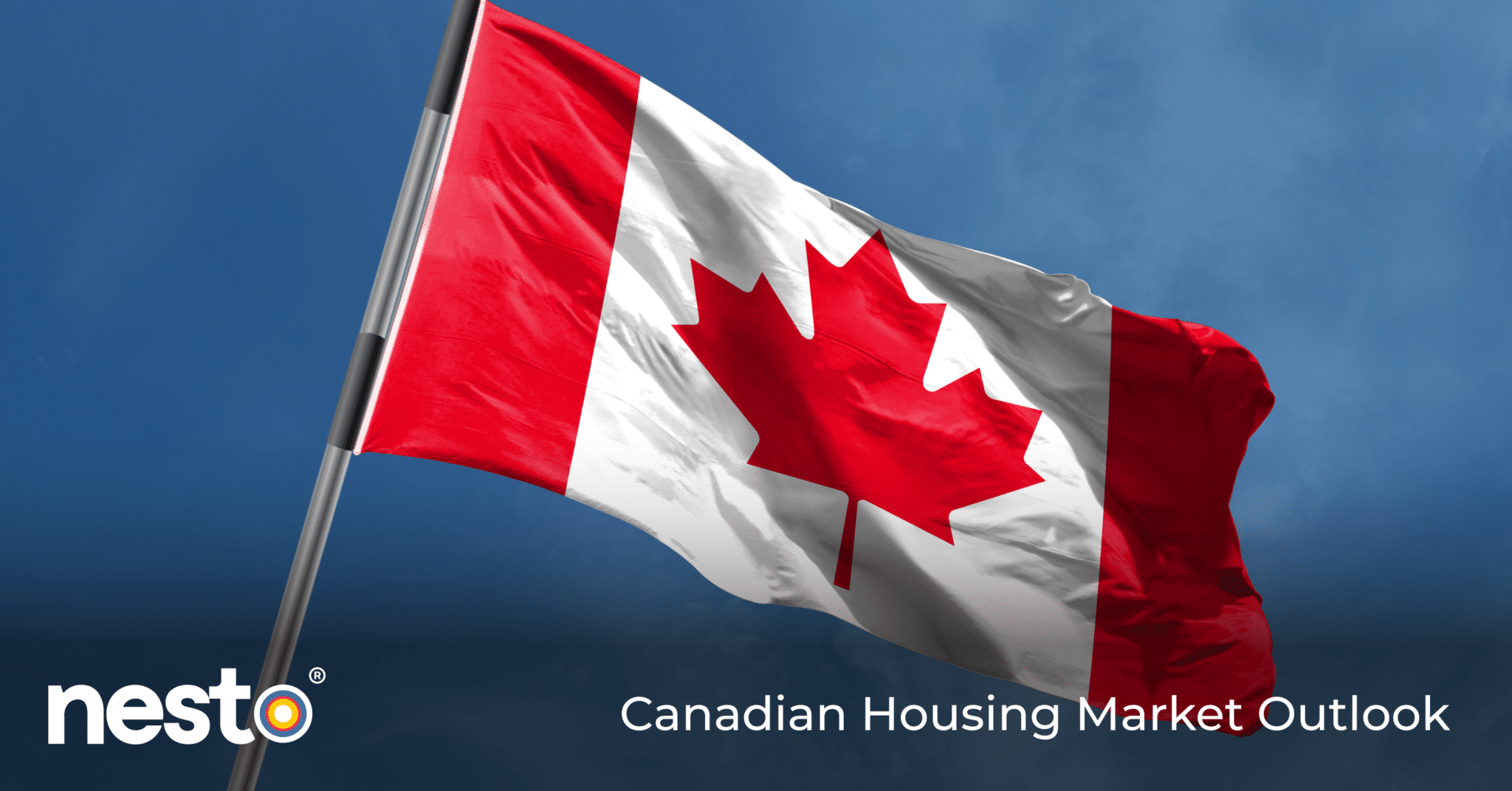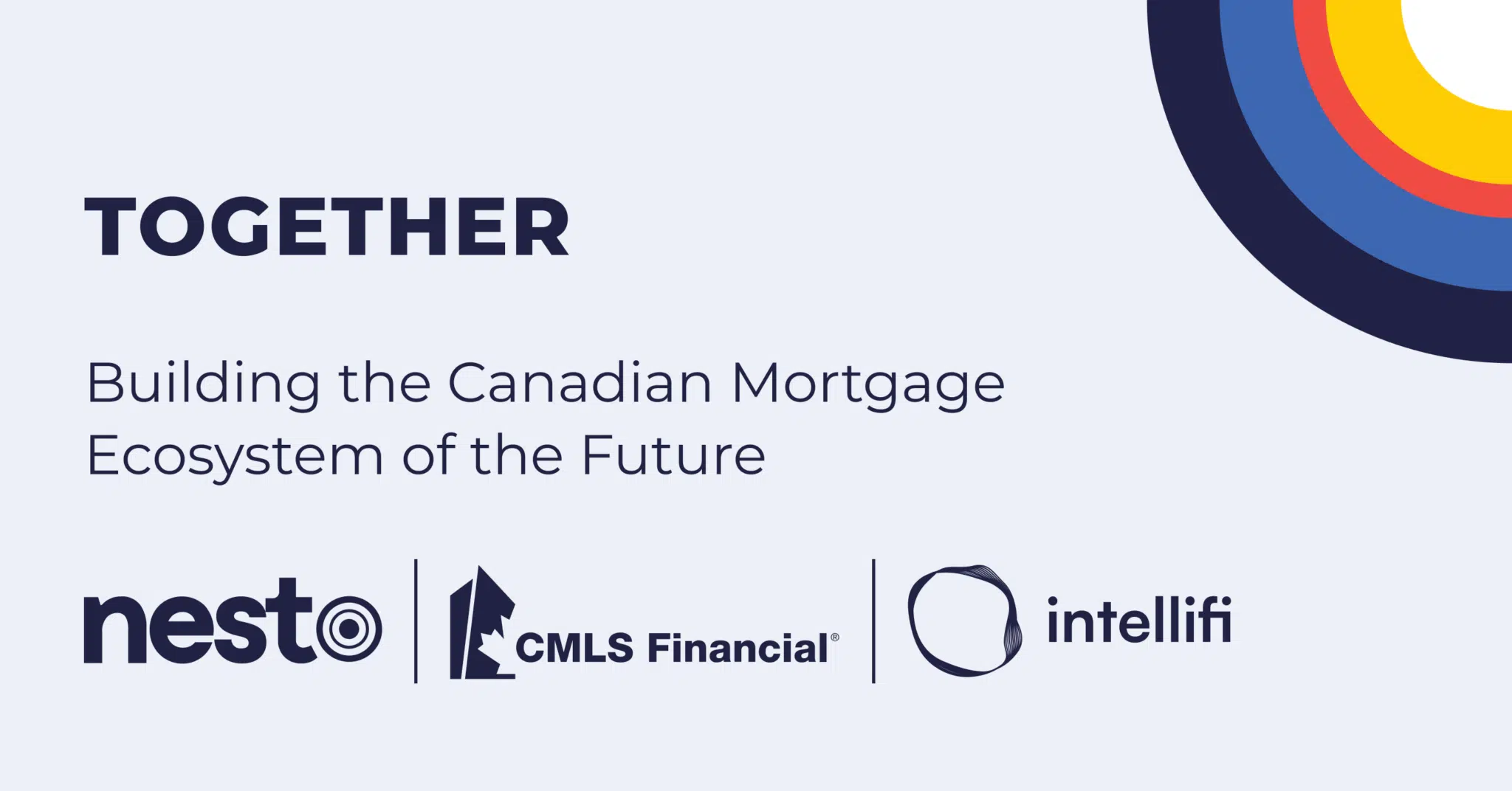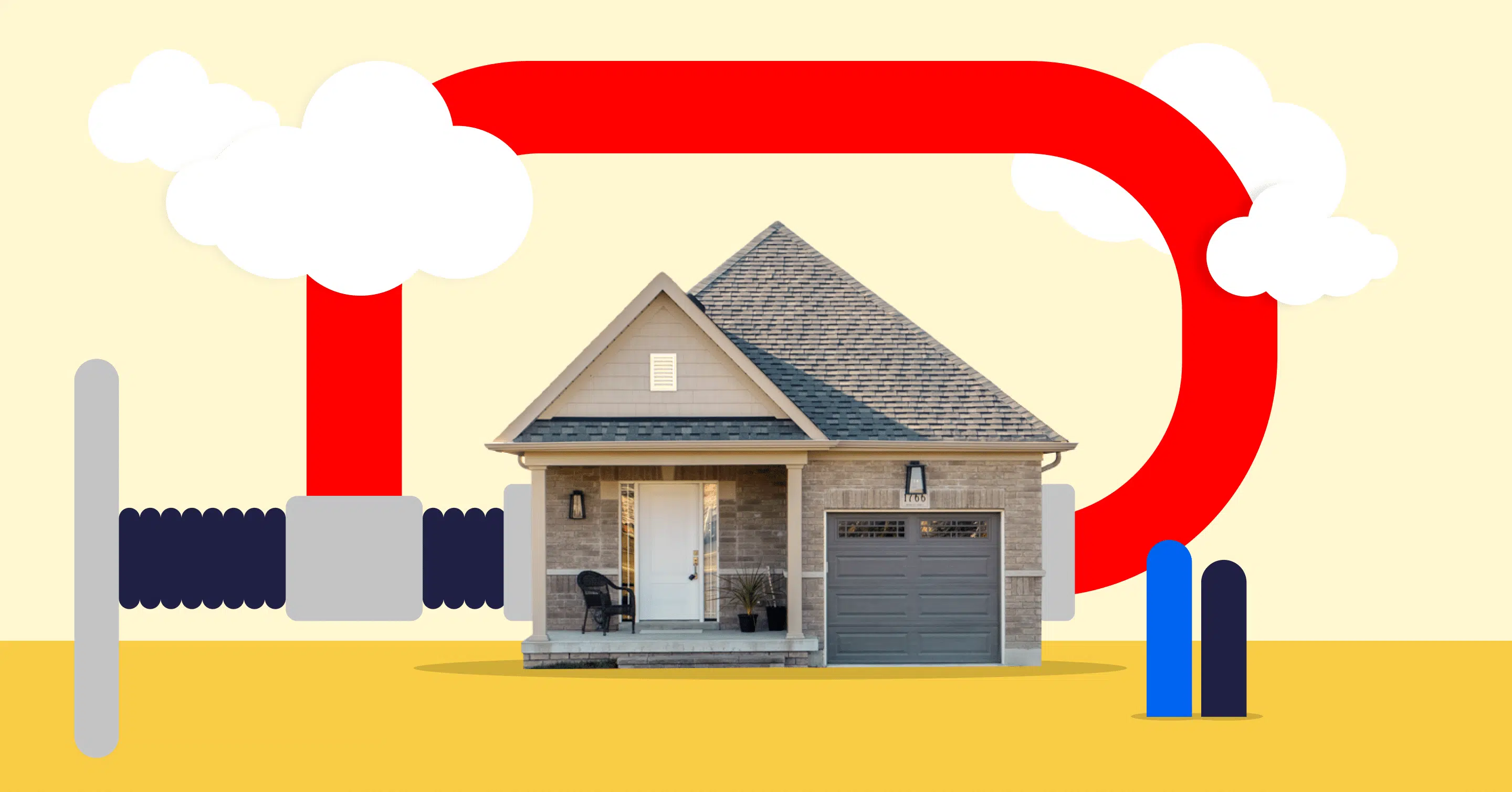Canadian Housing Market Outlook 2025

Table of contents
National Market Report Summary
- The average selling price of a home in Canada decreased by 3.5% year-over-year to $701,800 in May 2025.
- The average selling price of a single-family home in Canada decreased by 3.3% year-over-year to $779,600 in May 2025.
- The average selling price of a townhouse/multiplex in Canada decreased by 4.0% year-over-year to $643,000 in May 2025.
- The average selling price of a condo in Canada decreased by 4.7% year-over-year to $500,300 in May 2025.
- The average rent in Canada decreased by 2.3% year-over-year to $2,118 for May 2025.
- June 28, 2025: Today’s lowest mortgage rate in Canada is
for a 5-year fixed.
Composite Home Prices
![]()
The average selling price of a home in Canada was $701,800 for the month of May 2025, that’s decreased by 0.1% compared to the previous month. On a year-over-year basis, Canadian home prices have decreased 3.5% over the last 12 months.
Single-family Home Prices
![]()
The average selling price of a single-family home in Canada was $779,600 for the month of May 2025, that’s decreased by 0.1% compared to the previous month. On a year-over-year basis, single-family home prices in Canada have decreased by 3.3% over the last 12 months.
Townhouse and Multiplex Prices
![]()
The average selling price of a townhouse in Canada was $643,000 for the month of May 2025, that’s decreased by 0.2% compared to the previous month. On a year-over-year basis, the price of a townhouse in Canada has decreased by 4.0% over the last 12 months.
Condo Prices
![]()
The average selling price of a condo in Canada was $500,300 for the month of May 2025, that’s decreased by 0.2% compared to the previous month. On a year-over-year basis, the price of a condo in Canada has decreased 4.7% over the last 12 months.
We’re curious…
Canada Housing Market Summary
Data from the Canadian Real Estate Association (CREA) indicates that the benchmark price of resale residential homes sold across Canada in May 2025 was $701,800, and it decreased by 3.5% compared to a year ago.
CREA also reported a sales-to-new-listings ratio (SNLR) of 48%, indicating a balanced market nationally for May 2025.
Canadian Home Sales Climb While Prices Level Out
According to the Canadian Real Estate Association (CREA) for May 2025, home sales across Canada posted a monthly gain for the first time since late 2024. National sales activity increased 3.6% from April, driven by momentum in markets such as Toronto, Calgary, and Ottawa. While sales were still down 4.3% from the same time last year, the pickup in monthly numbers suggests renewed engagement from both buyers and sellers.
● National home sales rose 3.6% month-over-month in May
● New listings were up 3.1% compared to April
● Average home price was $691,299, down 1.8% year-over-year
● The MLS Home Price Index fell just 0.2% month-over-month
● The sales-to-new listings ratio (SNLR) held steady at 47%
● Inventory remains below the long-term average, with 4.9 months of supply nationally
Price Trends Show Signs of Stabilizing
The national average sale price remained under pressure on a year-over-year basis but has shown signs of levelling off month-to-month. The MLS Home Price Index declined only 0.2% from April, compared to monthly drops of nearly 1% in previous months. While affordability remains stretched in many major centres, particularly in Southern Ontario and parts of British Columbia, other regions are faring better. Markets in the Prairies and Atlantic Canada, as well as those in Quebec City, have shown greater resilience.
Listings Rebound as Sellers Re-Enter the Market
The number of new listings rose 3.1% month-over-month, which helped bring the total active listings to just under 202,000 properties. Although that’s still about 5% below the long-term average for May, it reflects a 13.2% increase over the same month last year. Sellers appear more confident this spring, especially as earlier volatility tied to trade tensions with the US has somewhat settled. An increase in listings, paired with a balanced sales-to-new listings ratio (SNLR), signals healthier market dynamics heading into summer.
Demand Reawakens Despite Headwinds
While the economic backdrop remains uncertain, especially with high borrowing costs and lingering affordability concerns, there are signs of cautious optimism. Shaun Cathcart, CREA’s Senior Economist, notes that earlier disruptions may have simply delayed activity. Markets such as Toronto, Ottawa, Calgary, and Saskatoon are experiencing more substantial transaction volumes after a sluggish start to 2025. Still, experts warn that confidence remains fragile, especially in the absence of a clear path for rate cuts from the Bank of Canada.
Balanced Conditions Dominate the National Picture
With 4.9 months of inventory and a sales-to-new-listings ratio (SNLR) just under 50%, the national housing market is in broadly balanced territory. Buyer demand is recovering, but there is little urgency as many households await more affordable mortgage rates. Meanwhile, prices are no longer falling steeply, but they’re not rising either. This suggests a stable but cautious market, where even slight shifts in rates or economic confidence could alter momentum either way.
Impact on Canadian Mortgages and the Bank of Canada’s Monetary Policy
The modest rise in home sales and the stabilization of prices in May suggest a potential inflection point in market activity. However, the lack of affordability gains and persistently higher mortgage rates mean that the Bank of Canada is unlikely to shift course prematurely. For homebuyers, this environment offers more negotiating power without the fear of bidding wars, especially in high-priced regions. Renewers may find their payment shock easing slightly if fixed rates hold or drift lower, while refinancers are likely to remain on the sidelines until rates improve or equity grows. If confidence builds through the summer, we could see upward pressure on housing again, which would complicate the Bank of Canada’s timeline for rate cuts, especially if inflation flares back up.
Month-over-Month Expectations for the Canadian Housing Market
Transactions – Number of Sales
![]()
The number of sales in Canada was 37,626 during May 2025, that’s increased by 3.6% compared to the previous month. On a year-over-year basis, sales in Canada have decreased by 0.5% over the last 12 months.
New Listings
![]()
The number of new listings in Canada was 78,980 during May 2025, that’s increased by 3.1% compared to the previous month. On a year-over-year basis, new listings in Canada have increased by 9.0% over the last 12 months.
Real Estate Market
![]()
The sales-to-new-listings ratio (SNLR) in Canada was 48% during May 2025, indicating a balanced market. On a monthly basis, that’s increased by 0.5% compared to the previous month. Canada’s yearly sales to new listings ratio has decreased by 8.7% over the last 12 months.
The sales-to-new-listings ratio (SNLR) measures the number of home sales compared to new listings. An SNLR under 40% suggests a buyer’s market in which buyers have the upper hand and more negotiating power. An SNLR between 40% and 60% is a balanced market, while an SNLR of over 60% is considered a seller’s market.
Red hot rates impacting your housing market experience?
With nesto, you can get a low rate with a 150-day hold.
Annual Changes Composite Home Prices by Province
Annual Changes to the National Composite Home Prices
We’re curious…
Canadian Rents Cool from Record Highs, But the Spring Bump Is Back
According to the June 2025 Rentals.ca and Urbanation National Rental Report, the average asking rent in Canada was $2,129 in May, marking a 3.3% year-over-year decline. This marks the eighth consecutive annual decrease, yet rents remain nearly 6% higher than they were two years ago and over 12% higher than they were three years ago. While affordability has improved slightly in recent months, average rent growth over the past five years still outpaces wage growth, continuing to strain renters nationwide.
Rents Slip from Record Highs, But Seasonal Growth Returns
Despite the year-over-year decline, recent trends indicate that rents are expected to climb again through the spring. Over the last three months, national rents have increased by 2.0%, in line with typical seasonal patterns. Purpose-built rentals have shown the most stability, with a modest 2.0% drop year-over-year, compared to sharper declines for houses (-7.0%) and condos (-3.6%). Larger family-sized units continue to hold up better, especially in the purpose-built segment, where three-bedroom apartments rose 3.9% annually to an average of $2,743.
Provincial Differences Highlight Rent Divergence Across Canada
British Columbia and Ontario remained the country’s most expensive provinces for rentals in May, despite year-over-year decreases of 2.6% and 3.6%, respectively. Alberta and Quebec also saw rent declines, while Saskatchewan, Manitoba, and Nova Scotia all posted moderate annual increases. The largest rent increases for three-bedroom apartments occurred in Saskatchewan (+7.5%) and BC (+7.3%). In contrast, two-bedroom rents declined significantly in Ontario (-5.8%) and BC (-3.9%).
Big Six Cities See Continued Rent Pressure
Rents declined in four of Canada’s six largest cities: Calgary, Toronto, Vancouver, and Montreal. Calgary led with a 7.9% annual drop, followed by Toronto (-6.8%) and Vancouver (-5.9%). Montreal apartment rents also decreased by 3.3%. Ottawa and Edmonton were the only major cities to post annual gains, though increases were modest. Ottawa stood out for rent growth across all unit types, with two-bedroom rents up 2.2% to $2,572. By contrast, three-bedroom rents in Calgary saw the steepest annual decline at 10.1%.
Ontario Shows a Wide Spectrum of Rental Conditions
Ontario cities once again represented a mix of extremes. Fifteen of the 25 most expensive markets outside of the Big Six were in Ontario, led by Oakville, Richmond Hill, and Markham. At the same time, the province also accounted for many of the most affordable and steeply declining markets. Richmond Hill saw a 9.0% year-over-year drop, while Windsor remains among the least expensive urban rental markets at $1,705.
Shared Accommodation Rents Mixed Across Regions
Shared accommodation rents fell in all four tracked provinces, with the national average down 4.7% to $945. Quebec saw the largest drop (-5.7%), while Ottawa bucked the trend with a 10.0% increase, reaching $1,030. Vancouver and Montreal both experienced nearly double-digit declines in this segment, highlighting weaker demand or shifting supply conditions in the shared living market.
Rental Impact on Mortgage Rates and Monetary Policy
The slowdown in rent growth, especially in key urban centres, is easing inflationary pressure from the shelter component of the CPI. If this trend continues into summer, it could support the case for future Bank of Canada rate cuts, especially if wage growth remains modest. For homebuyers, this creates less urgency to rush into the housing market if rental costs remain steady. Renewers and refinancers may also benefit from improving housing affordability if this cooling trend persists, although much still depends on the direction of interest rates and broader economic conditions.
Red hot rates impacting your housing market experience?
With nesto, you can get a low rate with a 150-day hold.
Canada Market Rents Summary
The average rent in Canada was $2,118 for the month of May 2025, which decreased by 2.3% on a year-over-year basis.
The average rent for a bachelor apartment in Canada was $1,614 for the month of May 2025, which decreased by 0.8% on a year-over-year basis.
The average rent for a 1-bedroom apartment in Canada was $1,902 for the month of May 2025, which decreased by 2.9% on a year-over-year basis.
The average rent for a 2-bedroom apartment in Canada was $2,299 for the month of May 2025, which decreased by 3.9% on a year-over-year basis.
The average rent for a 3-bedroom apartment in Canada was $1,902 for the month of May 2025, which decreased by 3.9% on a year-over-year basis.
How Does Renting Compare with Homeownership in Today’s Housing Market?
Each $100,000 in mortgage balance costs an average of $521.15 per month on nesto’s lowest fixed 5-year rate at
Rental Price Changes by City
Rental Price Changes by Province
Rental Price Growth by Housing Type
We’re curious…
Frequently Asked Questions on Canadian Housing Market Outlook for 2025
Will 2025 be a good year to buy a house in Canada?
2025 could be an ideal year for homebuyers as housing prices in Canada are expected to stabilize, offering a window of opportunity for those looking to enter the market. With demand expected to remain strong in big cities like Toronto, Vancouver, and Montreal, buyers should act quickly in regions where prices are more affordable. The potential for increased housing inventory and fewer price surges will make homeownership more attainable for financially prepared buyers.
Are Canadian home prices expected to drop in 2025?
Home prices in Canada are expected to stabilize rather than decline sharply in 2025. While some regions may experience slight price corrections, factors like low housing supply, population growth, and continued demand will keep prices relatively steady. Major urban centres may see modest increases, while smaller markets could experience greater affordability. Monitoring housing trends will help buyers identify areas with more favourable pricing.
Will Canada’s housing market still be in a bubble in 2025?
Speculation about a housing bubble remains, but experts predict Canada’s real estate market is entering a period of stabilization rather than collapse. Housing shortages, particularly in high-demand regions like Toronto and Vancouver, continue to prevent significant price drops. While affordability challenges persist, Canada’s market is more likely to experience a soft landing, with home prices balancing as supply improves.
What are the predictions for Canada’s housing prices in 2025?
Home prices in Canada are predicted to remain stable, with slight increases in major markets. Supply-demand imbalances will likely drive growth, particularly in regions with limited housing inventory. Cities like Vancouver, Montreal, and Toronto will remain competitive due to ongoing demand, while smaller markets may offer better affordability for buyers. Monitoring regional price forecasts will help identify areas with stable or lower home prices.
How will population growth impact Canada’s housing prices in 2025?
Canada’s strong population growth will continue to put upward pressure on home prices in 2025. Increased demand for homes, particularly in urban centres, will outpace the growth in housing supply, maintaining competitive prices. Efforts to improve construction and address supply shortages may help balance the market over time, but high-demand areas are expected to see continued price resilience.
Will housing affordability improve in 2025?
Housing affordability in Canada will remain a key challenge in 2025, especially in cities like Toronto and Vancouver, where demand far exceeds supply. While home prices are stabilizing, affordability improvements will depend on increased housing inventory and more balanced market conditions. Buyers looking for affordable options should explore smaller markets or up-and-coming regions where prices remain more accessible.
Why Choose nesto
At nesto, our commission-free mortgage experts, certified in multiple provinces, provide exceptional advice and service that exceeds industry standards. Our mortgage experts are non-commissioned, salaried employees who provide impartial guidance on mortgage options tailored to your needs and are evaluated based on client satisfaction and advice quality. nesto aims to transform the mortgage industry by providing honest advice and competitive rates using a 100% fully digital, transparent, seamless process.
nesto is on a mission to offer a positive, empowering and transparent property financing experience – simplified from start to finish.
Contact our licensed and knowledgeable mortgage experts to find your best mortgage rate in Canada.
Ready to get started?
In just a few clicks, you can see our current rates. Then apply for your mortgage online in minutes!















